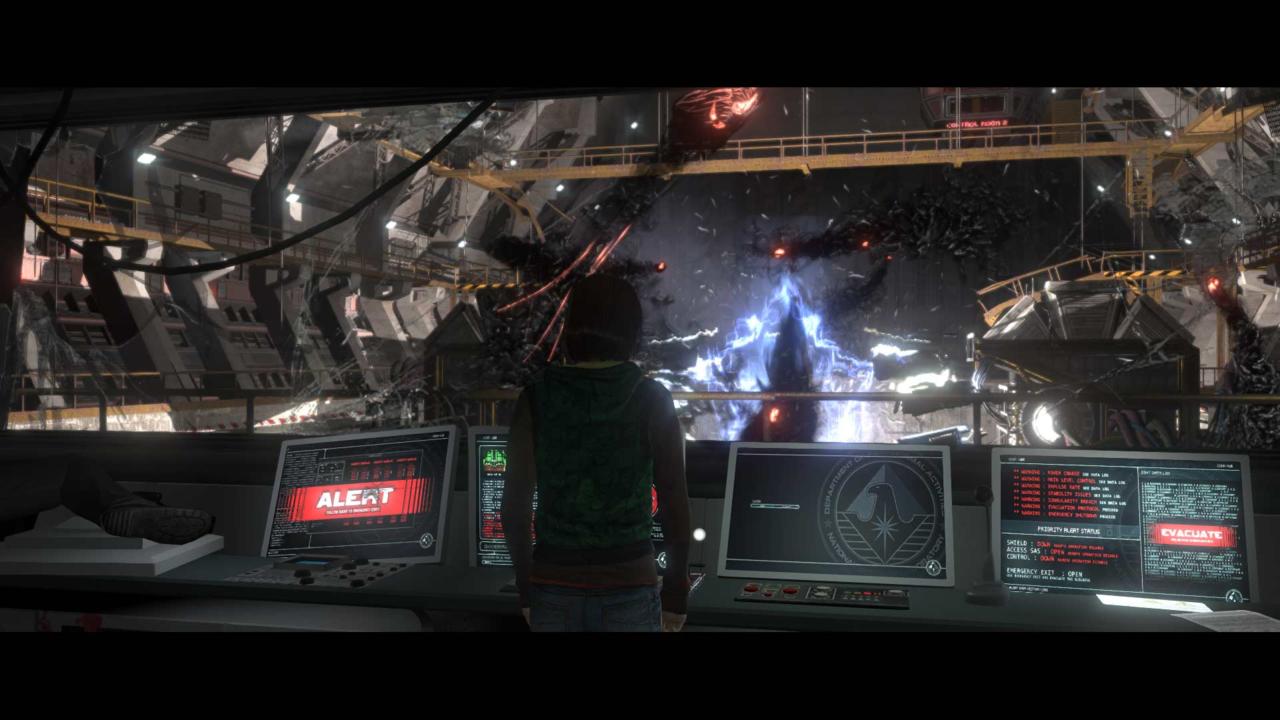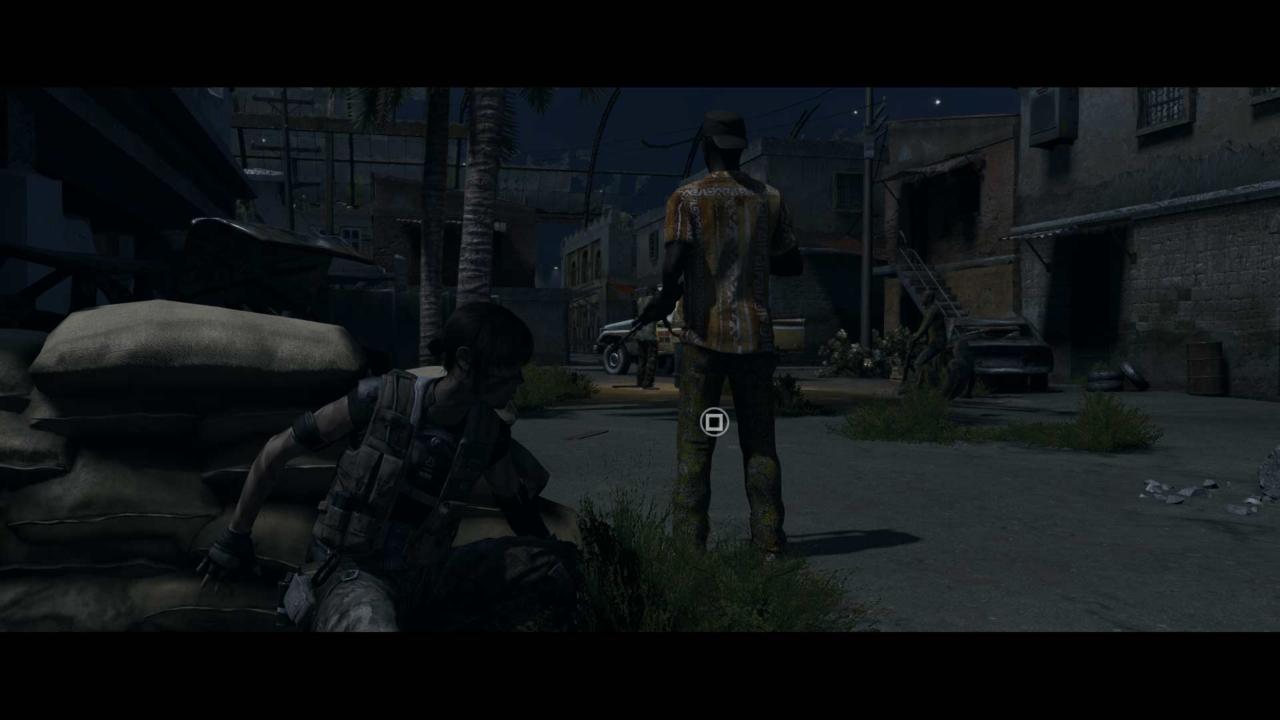The PS4 port of Beyond: Two Souls doesn’t fix the game's core issues. It’s still a very stilted, awkward experience in spots, usually right after a stretch where the gameplay and narrative get everything right. What it does do--thanks to this edition’s best new feature, where the timeline-hopping narrative can be played in chronological order--is strip away some of the high-concept pretense and deliver a straightforward story that's stronger as a result.
Beyond: Two Souls is about the life of Jodie Holmes (performed by Ellen Page), a girl who, since birth, has been tethered to an otherworldly entity named Aidan. Naturally, having a poltergeist as an impulsive companion doesn’t exactly equal an ideal life--especially since Aidan’s presence leaves Jodie open to frequent visits from the malevolent side of the hereafter. But even when she’s not being dragged around by invisible horrors, Jodie still has to contend with Aidan’s mischievous tendencies. And on days when Aidan is calm, there’s just life as a socially awkward girl who sees things that nobody should ever have to see. We follow Jodie over a stretch of 15 years, watching her deal with the world--and the world deal with her--and make decisions that change the course of her life.

Beyond feels right at home on PS4. Textures are noticeably upgraded from the PS3 version and lighting improvements galore create an even more stunning cinematic experience. The actual playing of Beyond hasn’t changed significantly in the transition to PS4. For the most part, it’s still a copy-paste job from Heavy Rain. Most of your time is spent wandering through closed environments, looking for the magical prompt that signifies when you can interact with an object or person.
In keeping with Quantic Dream's trademark style, action is handled by quick time events in a dynamic fashion, taking full advantage of the DualShock 4's motion-sensing functionality. The PS4 edition of the game does add a few tricky bits, where QTEs use diagonals instead of normal up-down-left-right prompts, but those only pop up in two of the chapters. The timing of the prompts seems stricter, which means that Jodie is liable to take a few more brutal hits when the going gets tough, but the QTEs don’t determine the course of the story so much as they bring the action to life. Yes, you could, in theory, just set the controller down during an action scene and let it play out on its own, but you’d be watching a sequence of Jodie getting the crap kicked out of her ad nauseum. Actively participating in Jodie's struggle is much more gratifying.

Through the course of the game, the best moments in each action scene require your input, whether you're jumping between moving vehicles, tossing soldiers into the road, stealing a motorcycle, blowing past a police garrison, or saving people from a burning building. There are even a few scattered sequences of stealth combat, where Jodie tackles hapless bad guys into the dirt.
Beyond’s big hook, of course, is the fact that, any time you have full control over Jodie, you can instantly switch to Aidan and roam the world as a phantom, floating through doors, walls, and objects, listening to secret conversations, force-pushing objects around, choking the life out of folks, or even possessing hapless victims. The seams of the gimmick show often. It’s built into the story that Aidan can actively hurt Jodie if he travels too far, but how far exactly seems to be determined by the needs of the scene rather than consistent logic.
Beyond feels right at home on PS4. Textures are noticeably upgraded from the PS3 version and lighting improvements galore create an even more stunning cinematic experience.
Having said that, the puzzles, obstacles, and story points built around Aidan’s powers are wonderfully plotted. A painful goodbye interrupted by Jodie’s irritating father can be salvaged if you choose to give him a much-deserved goodbye choke. More than once, Aidan will have to rescue Jodie from a sticky situation by possessing one of her enemies, forcing him to kill his friends and then himself. Its seldom that we get to see a story through the eyes of a spirit, and the extent to which its used in Beyond leads to some fascinating conclusions.
The chronological version of this story told in the new PS4 version is a marked improvement over the original, where the key points of Jodie’s life were scrambled up and presented as a random series of disparate moments as opposed to a life flashing linearly before her eyes. As a chronological narrative, we get a much better sense of the burden of Jodie’s powers, watching her grow from a curious but sheltered child into a rebellious teenager who longs to live in the real world, and ultimately, into a young woman who finds herself routinely beaten by society.

Much of the story's impact can be laid at the feet of Page. Her performance, both vocal and physical, is powerful; it retreats to hollowly call upon the full weight of Jodie’s collective traumas in one scene, using the same trauma to fuel a deep, embittered rage in the next. Willem Dafoe brings a similar gravitas. His side of the script is steeped in exposition, especially toward the end, but there are times when he demonstrates genuine warmth and paternal concern for Jodie--traits we rarely see from Dafoe. The supporting cast varies. Kadeem Hardison, the only other “name” actor in the game, is solid in his role, but elsewhere, actors fail to keep up and weigh down scenes with poor acting that contrasts with Beyond's more capable cast members.
Beyond remains an imperfect experience but is still compelling for what it accomplishes.
They’re bound to Beyond's schizophrenic script, which flips between sequences of earnest, pensive drama, high-octane action, and well-directed but conceptually goofy supernatural blather. The highs are spectacular: The sequence where Jodie deals with homelessness stands out, and a scene where she reunites with a heavily medicated relative is brutally harrowing. The lows, however, are bewildering in their shallowness: An eye-rolling incident at a bar, a detour into Navajo mythology, and a character’s sudden shift into comic book villainy ultimately disappoint. Occasionally, there are scenes like Jodie’s solo mission to take down an African dictator, which, while delivering a stellar dose of action, feels disconnected from the overarching narrative.
Beyond remains a unique experience, even as the tools implemented in its creation have become commonplace. It's filled with concepts that are immediately odd and illogical, but if you accept them on their own terms, they add up to a fascinating if unconventional tale. Beyond remains an imperfect experience but is still compelling for what it accomplishes.